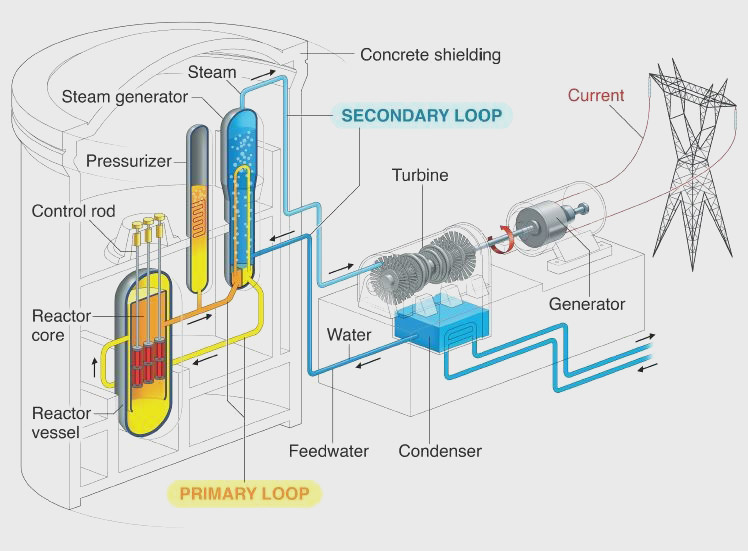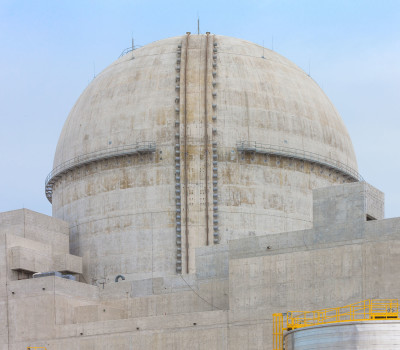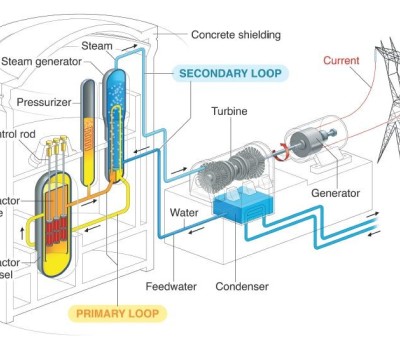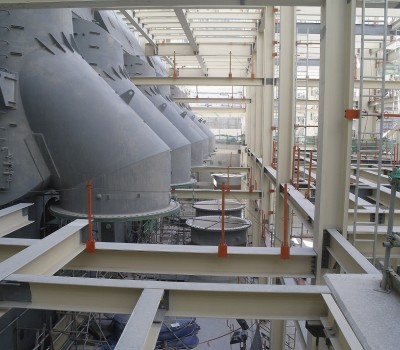How Does a Nuclear Energy Plant Generate Electricity?
The nuclear chain reaction produces heat inside the reactor vessel and heats water to a very high temperature. Due to pressure inside the system, the water does not boil.
This hot, pressurized water flows through thousands of looped pipes, while a second stream of water flows around the outside of the pipes inside the steam generator. This water is under less pressure, so the heat from the pipes boils it into steam.
The steam travels through pipes to turbines and spins their blades. The turbines’ blades spin the turbine shaft, which connects to a generator. The generator shaft rotates around inside a set of magnets. This creates electrical current.
The APR1400, the reactor design at the Barakah Nuclear Energy Plant, uses two coolant systems or “loops.” This two-loop system keeps water that absorbed radioactivity in the reactor core separate from the water in the steam generator, turbine and condenser. This separation ensures that radiation is contained within the closed system of the primary loop and does not transfer to the secondary loop.
Learn more about the different components and systems in the Barakah Nuclear Energy Plant.

Looking for some more information?




